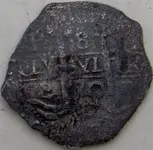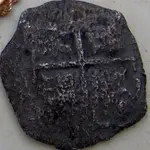In case anyone is interested...
________________________
2.06: Issuance of Permits
The Board issues permits to persons who have located a shipwreck or other resource for
purposes of investigation, exploration, recovery, reporting, and/or conservation of underwater
archaeological resources if the Board deems that such operations are in the public interest. No
person shall remove, displace, damage or destroy a resource without the Board's permission, except
for minimal artifact collection (entailing minimal site disruption) for purposes of establishing the
existence of an underwater archaeological resource. Permitees shall report, catalogue and inventory
all recovered artifacts to the Board. Permits shall not be issued in the absence of demonstrable proof
of the existence of a resource.
(1) Permit Types. The Board issues two kinds of permits, one for reconnaissance and one for
excavation.
(a) Reconnaissance - This permit is granted for the non-disruptive inspection and
identification of an underwater archaeological resource and is characterized by minimal site
disturbance. The purpose of the reconnaissance permit is to inventory the site, to protect
the discoverer's interest in the site, and to make available the protection and expertise of the
Board. Reconnaissance activities shall be limited to historical research, remote sensing,
visual or electronic observation, mapping, and limited collection of artifacts found without
excavation, solely for the purpose of identification or protection. All resources collected shall
be mapped, documented and conserved.
(b) Excavation - Excavation permits are granted to those who wish to uncover and/or recover
archaeological resources through the use of disruptive investigation techniques.
Disruptive investigation techniques include: the systematic removal, in sample or in entirety,
of artifacts or other resources from their context of discovery; or the use of excavation tools
or techniques (such as blowers, airlifts, suction, etc.) to expose resources which are buried in
the seabed or lake or river bottoms. Standards for archaeological recovery, recording and
reporting of underwater sites shall be maintained under an excavation permit. All recovered
resources shall be mapped, documented and conserved.
2.07: Permit Applications
(1) No person may remove, displace, damage or destroy any underwater archaeological resource
except in conformity with a permit issued by the Board.
Any qualified person desiring to conduct any type of exploration, recovery or salvage operations, in
the course of which any resource may be removed, displaced, damaged or destroyed shall first make
application to the Board, through the Director, for a permit to conduct such operations.
(2) Confidentiality. All records pertaining to a permit application shall remain confidential until the
application is acted upon unless released by the applicant. The general location and description of a
resource shall be made public and published as part of the agenda for the Board's meeting. All
records pertaining to a permit application shall become public record after the Board acts on the
application. Provided, however, that the exact location of the resource shall at all times remain
confidential and shall not be a matter of public record.
(3) Application Contents. A complete application shall contain at a minimum, but not be limited to,
the following:
(a) Application form. Copies of application forms are available from the Director.
(b) A description of the nature of the resource and demonstrable proof that the resource is
present at the proposed site.
(c) A project description, which includes the purpose and goals of the proposed project plan.
(d) A description of the project plan, including any documentary research, on-site exploration,
proposed reconnaissance, testing, and/or excavation activities.
(e) A project schedule.
(f) A personnel/organization chart which identifies all key personnel, their qualifications,
duties and responsibilities (including but not limited to documentation that all divers are
certified).
(g) Identification of the Project Director and (where appropriate) Project Archaeologist with
appropriate qualifications.
(h) A project budget.
(i) A description of the plans to document activities and finds.
(j) A description of the artifact conservation program.
(k) A description of the inventory and catalogue, which shall be maintained for all recovered
artifacts.
(l) A copy of an approved chart/map clearly indicating the requested site.
(m) The latitude and longitude of the center point of the requested permit area.
(n) The application fee.
(o) The signature of the Project Director and the Project Archaeologist where the Board
requires that one be appointed.
(p) For corporate applicants, the applicant shall provide its Massachusetts certificate of
incorporation or certificate of doing business.
(q) A statement describing the applicant's current or prospective financial ability to carry out
the field and laboratory activities described in the application.



 does not give much more info..could it be the wreck on Salisbury beach??
does not give much more info..could it be the wreck on Salisbury beach??

